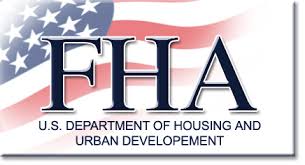Financial Assessment is still working. Now in its ninth year, FHA’s policy of requiring the financial assessment (FA) of borrowers’ ability to pay has helped cut tax and insurance default by over 80% and serious defaults by over 75%. These results validate the encouraging data we shared in previous years.
FHA’s objective for its Financial Assessment regulations was to reduce the persistent defaults, especially Tax and Insurance (T&I) defaults, plaguing the HECM program in 2009-2014. As FHA put it, “… an increasing number of tax and hazard insurance defaults by mortgagors led FHA to establish … a requirement for a Financial Assessment of a potential mortgagor’s financial capacity and willingness to comply with mortgage provisions.” Financial Assessment requirements became effective for HECMs with case numbers issued on or after March 2, 2015. Since then, HECM lenders make a financial assessment of borrowers’ ability to meet their obligations, including property taxes and home insurance. T&I and other defaults can lead to foreclosure and result in significant losses to FHA, HMBS issuers, and other HECM investors. Defaults rose steadily during the financial crisis and remained a thorn in the side of the program until Mortgagee Letters 2014-21 and 2014-22 were released.
It’s been eight years since Financial Assessment began, so we can measure with increasing confidence the effect of this policy by comparing default rates of loans originated before and after the FA rule was implemented.
With this in mind, we looked at a data set of more than 300,000 HECM loans, comparing loans originated in the post-FA period from July 2015 through March 2023 to loans originated in the pre-FA period before March 2015. After July 2015, there were few (if any) loans originated under the pre-FA guidelines. As the guidelines took effect in March 2015, the second quarter of 2015 included a mix of FA and pre-FA loans.
The data show a very strong reduction in T&I default in the post-FA period. As of March 31, 2015, the pre-FA data set had a T&I default rate of 7.1%, and an overall serious default rate of 10.5%. As of March 31, 2023, the post-FA data set shows a T&I default rate of approximately 0.9%, and an overall serious default rate of 2.3%. For the purpose of this analysis, we define serious defaults as T&I defaults plus Referrals to Foreclosures, actual foreclosures and other “Called Due” status loans. These results remain consistent when we compare comparable cohorts by loan age.
Over the past several years, FHA has taken a number of steps to reduce defaults in its HECM program. These include Mortgagee Letter 2013-27, which limits in certain cases the amount that can be lent in the first 12 months. Also, a series of Principal Limit Factor (PLF) reductions has reduced the amount lent even when the loan is fully drawn. Not surprisingly, the economic health of FHA’s HECM insurance fund has improved dramatically, from negative $8 billion in Fiscal Year 2016 to a positive $15 billion as the end of Fiscal Year 2022.
Given these results, we continue to give Financial Assessment high marks for reducing defaults. After nearly eight years of experience, it is clear the HECM program has graduated to a sounder credit footing.
(Editor’s note: The following commentary was republished with permission from New View Advisors, which compiled this data from publicly available Ginnie Mae data as well as private sources.)

